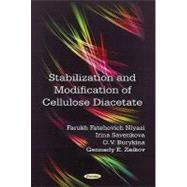
| Preface | |
| Modern State of Investigations of Photochemical Destruction of CDA | |
| About the Mechanism of Photooxidative Destruction of Cellulose Acetate | |
| Kinetics of Radicals Accumulation | |
| Kinetic Regularities of CDA Photooxidation | |
| Light Stabilization of CDA by Hexaazocyclanes | |
| Light Stabilization of CDA by Polyconjugated Azomethine Compounds | |
| Light Stabilization of CDA by Nitrogen and Sulphur Containing Aromatic Compounds | |
| Stabilizing by Means of Chemical Modification of CDA | |
| Thermo- and Photooxidative Destruction of Dyed Polyvinyl - Alcohol Fibres | |
| Index | |
| Table of Contents provided by Publisher. All Rights Reserved. |
The New copy of this book will include any supplemental materials advertised. Please check the title of the book to determine if it should include any access cards, study guides, lab manuals, CDs, etc.
The Used, Rental and eBook copies of this book are not guaranteed to include any supplemental materials. Typically, only the book itself is included. This is true even if the title states it includes any access cards, study guides, lab manuals, CDs, etc.